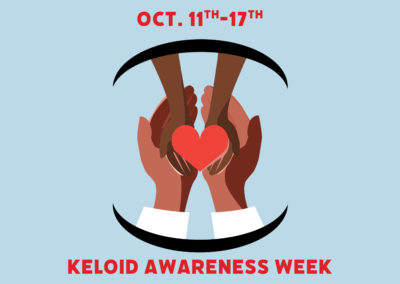Keloid coverage in health care insurance – is it racism? The Keloid is a raised scar or tumorous growth that develops in response to a wound, puncture, or trauma to the skin in those of African, Hispanic, and Asian descent. There is no specific cause to keloids. They are classified as genetic.
Keloids are usually harmless but can grow to inhibit body movement; cause serious pain and further infection; may continuously drain puss and blood; and mentally, they take a heavy toll on self -confidence. Once a keloid forms, it may grow for months. Keloid removal is not covered by most health insurance companies without a fight. Is this racism?
“Insurance companies know that the vast majority of people who get this are brown people, so they don’t want to pay,” answers Dr. Michael E. Jones, founder of Lexington Plastic Surgeons, in response to questions asked by Tamika D. Mallory and Mysonne “The General” on the Street Politicians show on iWomanTV.
Dr. Jones continues, “The most common place for a brother to have a keloid is on the back of his neck because we shave our heads close. The barber gets a little too close, the hair follicles shrink below the skin. As the hair is growing back it curls because we have curly hair. It creates an ingrown hair, and that ingrown hair creates inflammation that then leads to this big keloid.”
Dr. Jones speaks further on the program, about the pain, both physical and mental, of a keloid growth that overwhelms a trauma to the skin.
As with any surgery, Lexington Plastic Surgeons suggests you speak with your health insurance provider to learn their coverage and procedure. Not all plastic surgery is covered by insurance as it is considered “Elective” surgery where the patient is asking to fix, adjust, something on their body.
“A keloid growth is a medical condition,” emphasizes Dr. Jones. “Especially a keloid growth that inhibits the body’s natural stature by inflicting pain, itching, bleeding. Its removal should be covered by insurance.”
Keloids are diagnosed on over 200,000 people annually. Some will know they are genetically inclined toward getting a keloid because a family member may warn them. Others will learn after an ear piercing, a close shave, a tattoo, or a surgery, then a keloid forms. Some celebrate the uniqueness that a keloid brings; others hide from the world and suffer pain and low self-esteem.
Removal of a keloid can cause the keloid to return and grow even bigger. Dr. Michael E. Jones, aka, Dr. Keloid, has a 90% non-return rate with his clients’ keloid removal. His multifaceted, personalized procedure may involve Sensus Healthcare Superficial Radiation Therapy (SRT-100) which allows a low-energy radiation dose specifically targeted on the keloid; Candela VBeam pulsed Dye Laser; dissolvable sutures that won’t cause additional trauma to the area; Platelet Rich Plasma Surgical Excision; removal; and skincare follow up.
Dr. Keloid, having successfully treated over 6000 patients from different backgrounds with very different keloid stories, created Keloid Care cream. He recommends using the cream post-operation.
Watch on iWomanTV:
https://lnkd.in/dmeaYSVt
Listen on the Black Effect podcast network:
https://lnkd.in/dqP5vPSs



